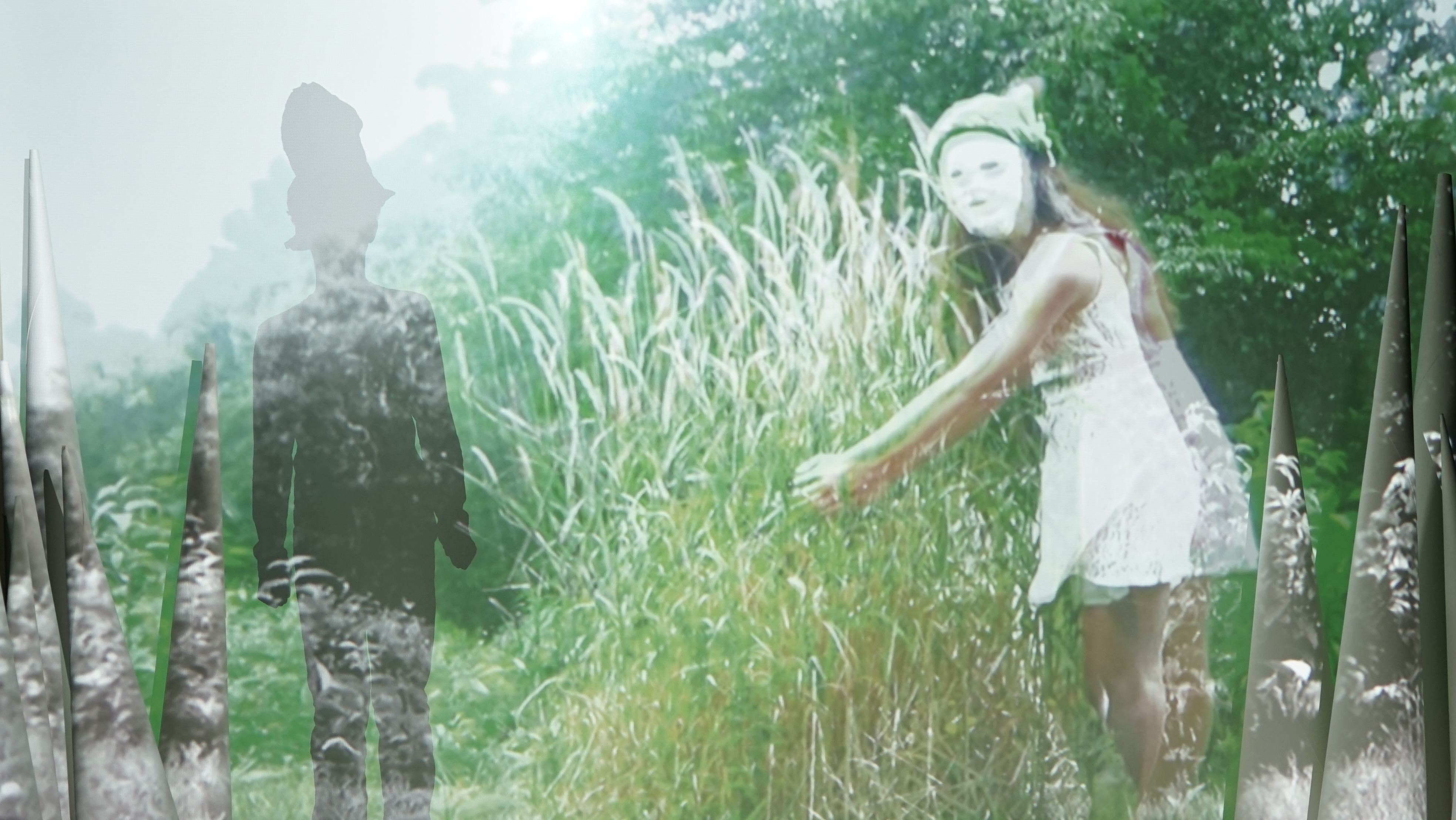Joan Jonas, born in 1936, is an American video art, sculpture, and performance artist. Jonas’s work has seen widespread acclaim, participating in world-renowned shows ranging from dOCUMENTA (13) to her most recent solo show at the Venice 2015 Biennial. DHC/ART’s exhibit From Away, which opened on April 28, brings together a comprehensive retrospective of the artist’s complete body of work, the first of its kind in Canada, designed by guest curator Barbara Clausen.
From Away incorporates video and photography while featuring significant and iconic props from Jonas’s video and performance art, such as the 8-foot cones situated in a circle taken from Street Scene With Chalk, developing a raw swarming network of artistic inclination and inspiration. The methodology is highly indicative of Jonas’s attentive study of the late Aby Warburg’s Atlas. In the informational brochure accompanying the exhibit, Clausen explains that Jonas’s images interact with each other, creating “a fine web of new stories over time.”
Jonas deconstructs the linear narrative in Street Scene with Chalk, an 11-minute video projected on a loop, on the first of 4 floors which comprise From Away. It shows a filmed scene of a quiet street at night with a couple walking and moving about as the artist’s hands draw over the recording in chalk. In an interview with the Wattis Institute, Jonas spoke to the performance aspect of the piece, inspired by her 1976 performance Mirage, and explained that she organized an improvisation near Wall Street, which was completely deserted at night.
By overlaying the drawings on top of the improvised scene, Jonas proposes stories that intercept and mediate or negate each other, destroying the cohesive linear quality to any single narrative. In simultaneously presenting two images, the artist splits the attention of the viewer, forcing them to move back and forth between the stories, which in turn merge and negotiate with each other to produce an entirely new narrative.
While Jonas has many points of focus, perhaps she is most compelling in her intense study of ritual and linearity of narrative in her art, which allows her to arrive at a provocative cultural analysis of the contemporary world, the one of unprecedented disconnect.
In contrast to her efforts of deconstructing dominant cultural narratives, Jonas revives the traditions of rituals in other pieces. She achieves this most notably in her 1972 performance Organic Honey’s Visual Telepathy. Jonas is deeply intrigued by the translation of performance art to other image-based media: for this reason, the exhibit presents her performance piece through a variety of stills from the original, props from the performance, as well as video clips, rather than a projected recording of the piece, as a method of immersing the viewer and effectively relating a past performance.
It is critical to note the problematic nature of Organic Honey’s Visual Telepathy. In the performance piece, Jonas is seen donning a plastic mask of a woman’s face wearing heavy make-up, a peacock feather headdress, and a kimono. Jonas aims to fragment her own image by concealing it with costume, while using the camera as an apparatus to exhibit her own image. As Clausen explains, the performance discusses dualities within female representation and imagery, while considering and deconstructing the visual relationship between viewer and camera.
By appropriating cultural artifacts such as the kimono, Jonas appears to be exoticising cultures to which she has no claim. Though her aim is to discuss norms of femininity as they appear across various cultures, Jonas ultimately enacts violence upon the cultures whose artifacts she appropriates as she exploits their decorative aspects while failing to perform a nuanced engagement with their cultural meanings. Jonas is not alone in committing such acts of appropriation in her work. In fact, it has been a widespread phenomenon in contemporary art, spurring white artists to produce work that underlines the prevalence of cultural appropriation in the arts.
The DHC retrospective on Joan Jonas makes a sweeping survey of her life’s works, spanning decades and mediums alike. In an interview with Alvin Curran, she asserts that the period of contemporaneity is “historically speaking, a period of mannerisms and fragmented memory.” While Jonas has many points of focus, perhaps she is most compelling in her intense study of ritual and linearity of narrative in her art, which allows her to arrive at a provocative cultural analysis of the contemporary world, the one of unprecedented disconnect.
From Away runs until September 18 at DHC/ART.

